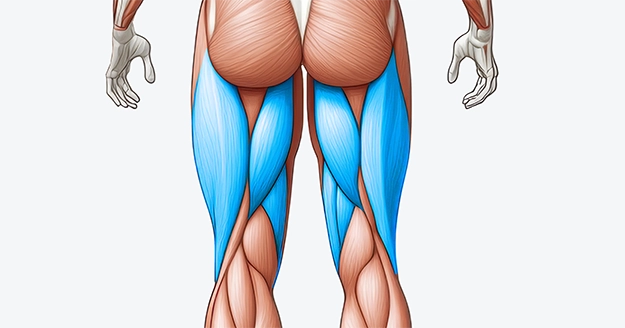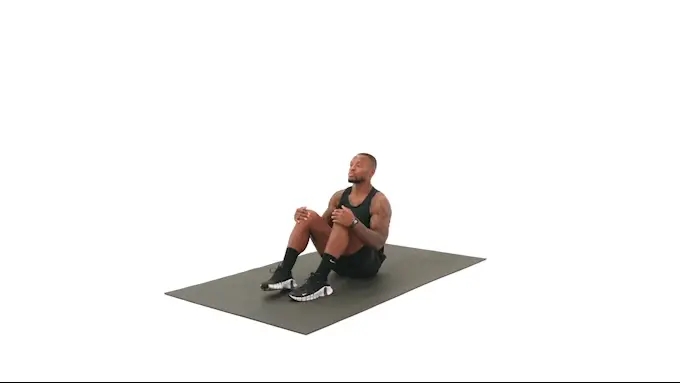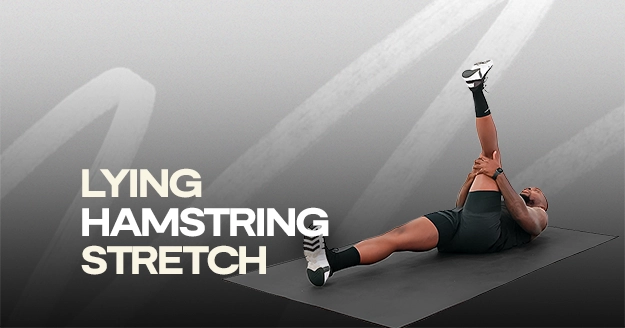Exercise Profile
Lying Hamstring Stretch Overview
The lying hamstring stretch is a great exercise that targets flexibility and tension release in the hamstrings at the back of the thigh. This stretch is ideal for relieving stiffness, improving muscle elasticity, and enhancing overall knee and hip mobility, essential for various lower-body movements and athletic activities.
Consistent practice enhances hamstring flexibility, which can improve overall mobility and support functional movements like bending, walking, and maintaining proper posture. Whether as part of a flexibility routine, recovery session, or injury prevention strategy, the lying hamstring stretch is versatile and beneficial for people at all fitness levels.
By stretching the hamstrings while lying down, the back and spine remain supported, reducing strain and allowing for a deep stretch without risking injury. Regularly practicing the lying hamstring stretch can alleviate lower back pain, improve posture, and increase range of motion, making it a valuable addition to both warm-ups, cool-downs, and flexibility and mobility routines.

Lying Hamstring Stretch Instructions
Step 1: Look for a flat area and lie flat on your back with your legs extended.
Step 2: Keep a neutral neck. Raise one leg as high as possible while keeping the other leg level on the floor.
Step 3: Grab the thigh of your raised leg using both hands and pull it toward you.
Step 4: Repeat the same on the other side after completing the prescribed duration or repetitions.

Common Lying Hamstring Stretch Variations
Trying different supine hamstring stretch variations can target flexibility from new angles, accommodate various fitness levels, and reduce or increase intensity. These options offer a customized approach to relieve tightness and improve hamstring flexibility. Here are some common options to try:
Lying Hamstring Stretch Tips
- Keep your spine neutral by pressing your lower back against the floor.
- When stretching, make sure your leg and hip are parallel.
- Extend your leg until you feel a gentle stretch – avoid any pain or excessive discomfort.
Lying Hamstring Stretch Common Mistakes
- Lifting the Opposite Leg: When raising one leg, Some people may lift the opposing leg off the ground, which disrupts the stretch.
- Neglecting Variations: Sticking to one stretch version can limit flexibility progress.
- Not Holding the Stretch Long Enough: Many people rush through the stretch without holding it for the recommended time.
Frequently Asked Questions
Can the lying hamstring stretch help with lower back pain?
Yes, stretching the hamstrings can help alleviate tension in the lower back. Tight hamstrings can pull on the pelvis and contribute to lower back discomfort, so regular stretching may improve overall posture and reduce pain.
What should I do if I can’t lift my leg very high?
If you struggle to lift your leg high, use a resistance band or towel for assistance. You can also keep your knee slightly bent to reduce strain while achieving a beneficial stretch.
When is the greatest time to stretch your hamstrings when lying down?
You may do the supine hamstring stretch whenever you want. But it’s most beneficial after a workout to help you cool down and kickstart recovery. Stretching after exercise helps maintain flexibility and reduces muscle soreness.
Post your post-workout selfies in IG and tag @trainestapp, #trainest, or DM them to us to get a shoutout on Trainest Stories!


